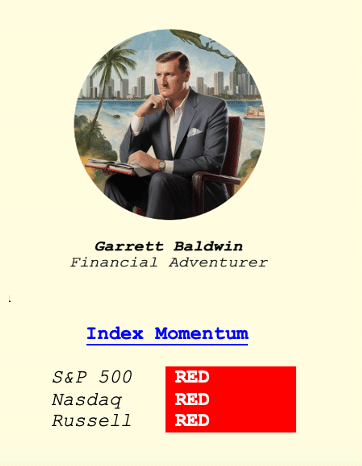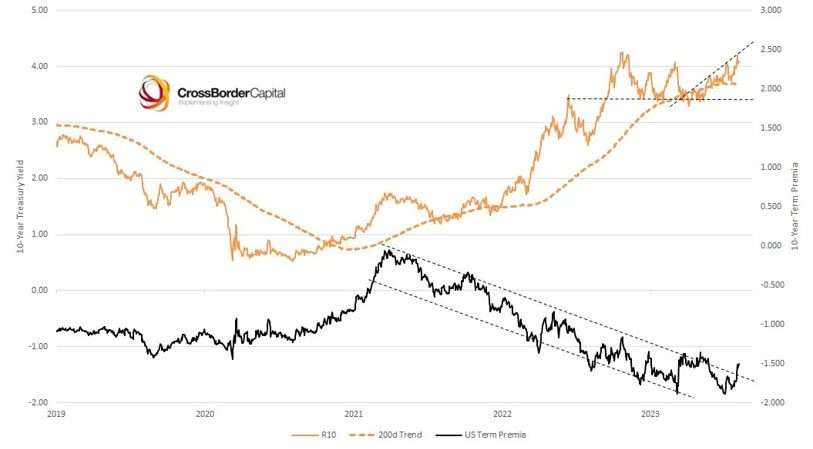
 Before we get started, I wanted to show you something really cool. My colleagues at LuckBox magazine took my article on Cathie Wood last week and turned it into a video. It's on YouTube, and I narrated it.
Before we get started, I wanted to show you something really cool. My colleagues at LuckBox magazine took my article on Cathie Wood last week and turned it into a video. It's on YouTube, and I narrated it.
Check it out. And please leave a comment.
Dear Fellow Expat:
Two days ago, I said there was nothing like October baseball in Baltimore, Maryland.
But, my recent trip has reminded me of my high school years and the few years I spent here after graduate school.
There's nothing like October weather in Maryland.
I spent the weekend in Brooklynville, MD, about five miles from where I grew up. The corn harvest is ending. There's a crispness in the air - carving through whatever humidity remains with a knife.
It's good for the blood (but maybe not for the knees when the rain kicks in). This is cross-country running weather. The sun is still warm, but the breeze is cool, and it feels like you're running your hands and face through a stream.
I used to run cross country in the fall in preparation for lacrosse season in the spring-long miles... with nothing but my thoughts and the ability to take a minute and ponder the world.
It'll make you homesick if you let it.
There is only one thing left to do before I head home.
How about a dozen shrimp and some oysters on York Road...
Challenge accepted.
Understanding Risk
For the next ten minutes, I'll wipe Old Bay off my hands as I explain the most critical finance chart. (Also, the Horseradish has awakened me with the same rush as espresso.)
This morning, I released our Republic Risk letter to give readers an understanding of individual sector readings... and to dig deeper into insider buying, geopolitical risk, and more.
The big story today... is Hamas and Israel. Oil stocks squeezed higher, and natural gas/coal prices pushed higher. There's a real challenge ahead if tensions escalate with Iran in the Strait of Hormuz. It's not just oil flows that are at risk.
Natural gas will also get squeezed on both sides out of Qatar.
But here's the critical factor: Oil prices didn't pull the energy sector out of negative weekly conditions (yet). If this event is short-lived, then oil prices are likely heading lower.
And many institutions are using today's pop as an excuse to sell. Remember - the purpose of a market... is to sell.
Geopolitical tensions do fuel movements in capital and liquidity. And we're not in a situation where there's been a real commitment to rebuy equities. I've largely seen the rebound off Wednesday as a short squeeze from oversold levels. Short covering can take a market higher, even in lower volume periods.
This price action tells you that the bigger narrative for the markets is still the subject of our negative momentum turn in mid-September. Interest rates are heading higher for longer.
As I explained yesterday, the most important chart in finance is this one.

This measures the U.S. Treasury yield against the term premia for U.S. bonds. This was back in August when the 10-year bond was hovering near 4.0%.
Today, it's sitting at about 4.8%.
And U.S. term premia are still declining - signaling a big problem for the bond market.
Term premium represents the additional return investors anticipate if they hold longer-term bonds instead of short-term ones.
Usually, a short-term bond like a two-year bond would pay LESS than a 10-year bond (this is the mental representation of the bond yield curve). Why should a longer-term bond pay more in interest? Because investors demand a higher return for locking their money up for more years in that bond. The risks investors face when dealing with longer-term bonds are typically interest rate, inflation, and credit risk.
Naturally, if inflation runs hotter for longer, an investor wants to make a higher yield. Why?
Because that inflation will eat into their returns.
But we don't have this situation right now.
We have high inflation AND an inverted yield curve.
Today, short-term bonds are trading at HIGHER interest rates than longer-duration bonds.
An inverted yield curve occurs when the yields on shorter-term bonds are higher than those on longer-term bonds of the same issuer and credit quality. This scenario often signals economic uncertainty and can significantly impact term premia. Simply put, markets expect a recession.
The bond markets are starting to wake up to the fact that the U.S. is facing both an economic downturn (recession or stagnation) and a refinancing crisis.
The U.S. government now needs to refinance about $7.6 trillion in short-term debt that is set to expire in the next 18 months. The government really can't afford to be paying short-term bonds at north of 5.2%. The government NEEDS investors to pile into longer-duration bonds because there remains a lot of uncertainty around the next two or three years.
All the while, Japan, China, and other emerging markets are turning away from U.S. Treasuries while dealing with their own refinancing problems.
The problem faced in this market has little to do with regional banks or geopolitical tensions in the Middle East. We have a crisis of "Security." Safe U.S. Treasury bonds are now as dangerous as British bonds in 2022 and Mortgage-Backed Securities in 2008. When they write the autopsy of our current refinancing crisis, it will be the same story as always.
Safe assets brought the economy to the brink...
All the while, people will gloss over the obvious problems.
The government is spending too much money and is about to unleash a massive wave of bond auctions that will likely see higher rates due to demand challenges.
Japan's decision to raise rates earlier this year fueled a fire spreading after a long-term downgrade to America's credit rating.
And efforts by other nations (particularly coordination between Russia and China) will challenge the seigniorage and homogeny of the U.S. dollar.
But, like always, this will be too complicated for most politicians to understand.
So, they'll blame immigrants and poor people.
Stay positive,
Garrett Baldwin
Secretary of Finance


